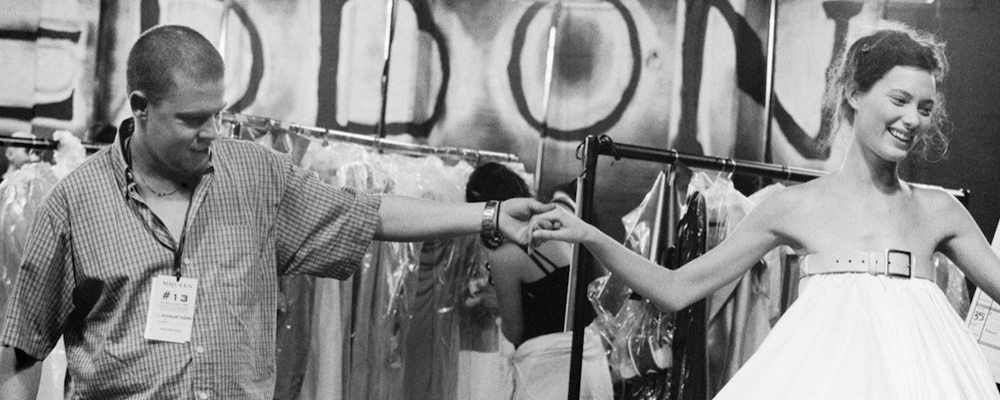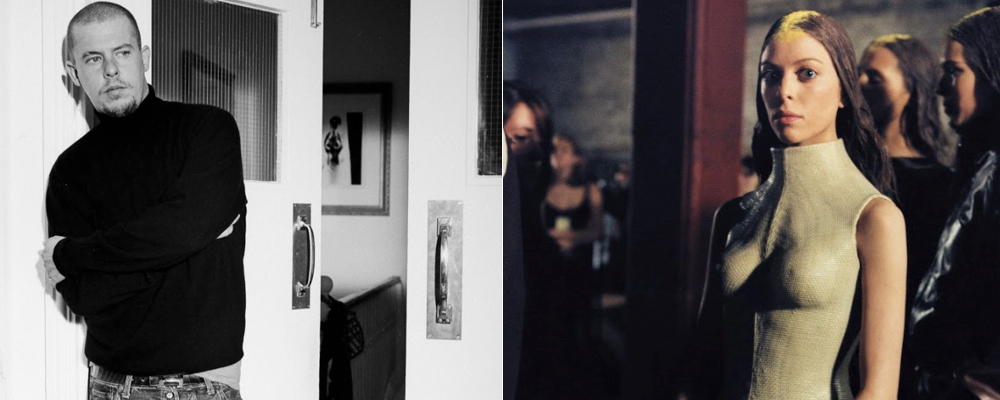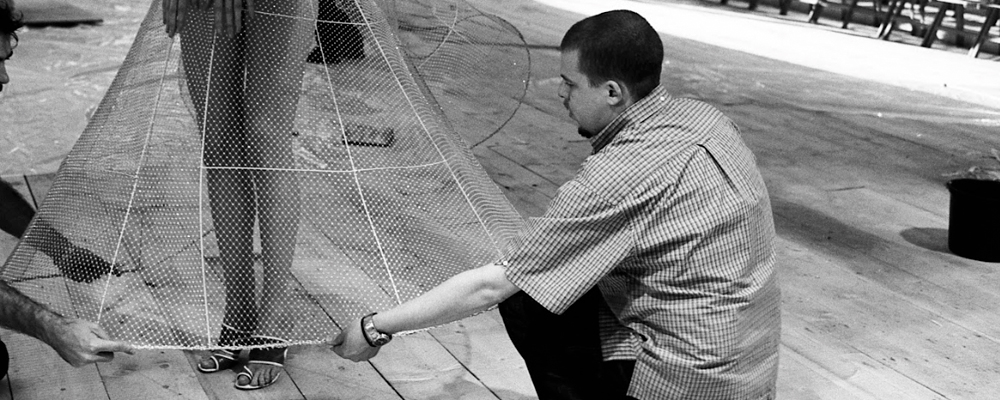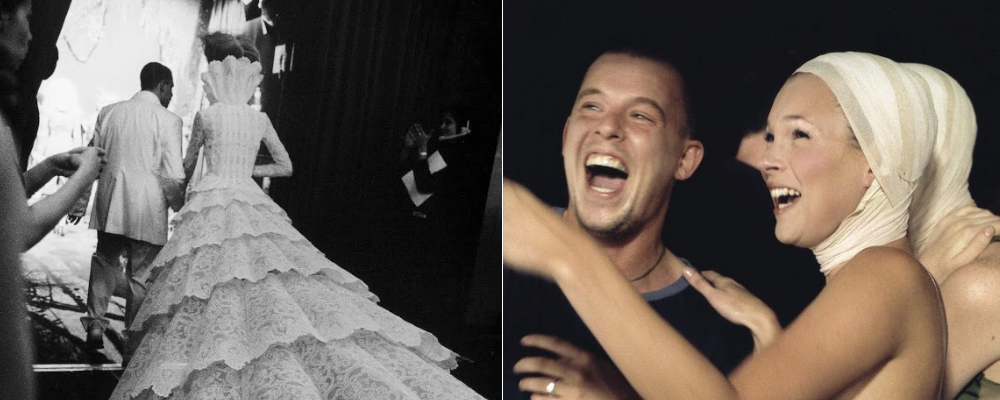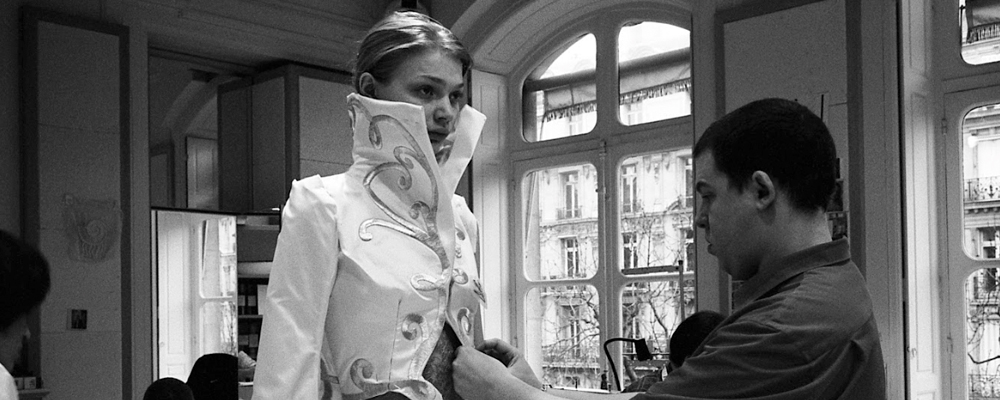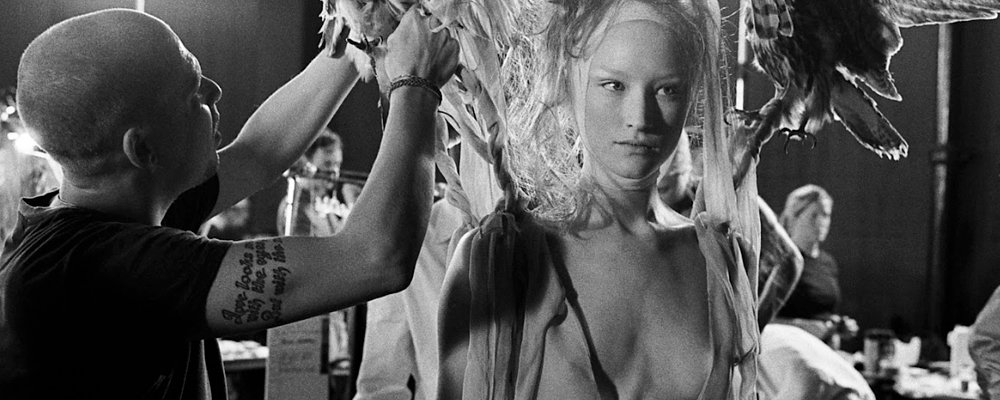‘McQueen’ Is a Stunning, Emotional Documentary of Fashion Designer Alexander McQueen
Michael Amundsen
Alexander McQueen was was born a working class London East-Ender. McQueen shook the British Fashion industry to its core. He was awarded British Designer of the Year four times. Givenchy made him their creative director, that is until Gucci lured him away, but at the age of 40, on the eve of his mother’s funeral, he committed suicide by hanging himself.
A new documentary on his life, “McQueen,” is a brilliantly structured, stunningly visualized and exhilaratingly edited examination into the life and career of Lee Alexander McQueen with revealing observations from those who loved him. Recently Entertainment Voice had the opportunity to hear from directors Ian Bonhôte and Peter Ettedgui as well as McQueen’s close friend Mira Chai-Hyde their observations on McQueen and how to turn an ambitious life of prodigious creativity and beauty into a two hour documentary. Bonhôte explained how they began the process.
“When we were designing the structure of the whole film, we picked the (fashion) shows that illustrated important aspects of his biography. Once we made a decision about that handful of shows, they would be our anchors.”
“We had people ask us “why are you showing this or why Golden Fleece (his first show at Givenchy) when it wasn’t that good?” But once you decide what you are doing story-wise, that conditions the decisions you make.”
Getting the cooperation of McQueen’s closest friends and family had its own challenges as recounted by McQueen’s make-up and hair stylist Mira.
“I knew it wasn’t going to be sensationalistic about his art and it would be honest. They didn’t get everyone, but the important people were in it. And we had a voice to honor him properly.”
The film itself is a visually powerful pallet of unforgettable images. Again Bonhôte explains.
“From the start, we really wanted to make a cinematic experience. I’ve done a lot of music videos and commercials and I love movement. We were looking for ways to inject movement. The structure of the film had these five acts and we approached this very talented designer friend of ours and we talked about skulls and how we could draw inspiration from the chapters in the film to create the skulls.”
“The last skull was designed by Lee’s nephew and then it was created in 3-D with things (McQueen) was passionate about like moths and flowers and birds.”
Ettedgui added, “We began to find other uses for them when we wanted something more allegorical. For example, the shot of the skull with the wilting flowers was originally designed for a digital poster but we thought that instead of having shots of newscasters telling us about Lee’s death, let’s just cut to the flowers instead with the newscasters as voice-over.”
McQueen was the youngest of 6 children. His mother describes him as a “loving, happy child.” He was proud of his father’s Scottish Skye heritage, which influenced much of his work. His mother made him feel he could anything. He revealed his homosexuality to his parents at the age of 18.
McQueen began at the bottom driven by an over-whelming work ethic. After a tailoring course at Newham College, he would later earn an MA at Central St. Martins College of Art and Design. There, the influential fashion stylist Isabella Blow bought his entire graduation collection. She would be become an influential second mother to him until her suicide at the age of 48.
Club culture at that time in London consisted of colorful flamboyant costumes designed for that one night of clubbing.
Ettedgui said, “There was sense of Do It Yourself coming up in popular culture. Going to clubs like Hinky Galinky and making your own costume sort of informed Lee. There wasn’t much difference between that and putting on your own show.”
One of the things that the film does well is show the progression in McQueen’s collections as exemplified by his elaborate fashion shows. Initially there’s a strong element of shock value in the first shows like “Jack Ripper Stalks His Victims” and the especially controversial “Highland Rape.”
As McQueen began to show his soft side, breath-taking imagery began to develop. At the end of one show, a precise choreography between two paint-spraying robots and a rotating model is overwhelming. “Voss”, with its two-way mirrors and padded cells, would be followed by the unforgettable “Plato’s Atlantis”, where McQueen made his last show appearance. It is an army of models with a motif of fish fins (McQueen was an avid diver) and snake scales. As described in the film, it was the digital age comes to fashion.
As it does to many, success brought negative issues to his life. He fell into drug use, which he would battle on and off. At one point, he has cosmetic surgery done to his body to lose way and make him more attractive,
“He drank the Kool-aid for a little while,” observes friend Mira. “But I think he regretted it.”
More perhaps could have been said of McQueen’s pragmatism and his loyalty to the livelihood of his talented crew. Taking about McQueen’s balance between poetry and commerce, Tom Ford says in the film that McQueen was well aware that, “you can have the flashy outfits for the show, but you have to have something to hang on the rack.”
The haunting music ranges from brash, frenetic compositions to haunting solo piano. They were all composed by Michael Nyman. McQueen loved his work on films like “The Piano.”
In a short two hours, Bonhôte and Ettedgui succeed in combining all the right elements and insights to give this amazing artist and fashion designer a documentary of depth and empathy. It is an unforgettable portrait of a man that co-director Bonhôte believes is, “the greatest fashion designer ever.”
“McQueen” opens July 20 in select theaters.

